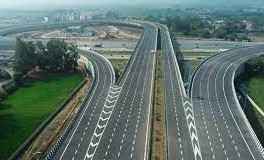Congress Mahalakshmi scheme: What would be the fiscal impact if Rs 2 lakh is transferred annually to poor households?

The Indian National Congress has promised that it will provide Rs 1 lakh per household per year, should it emerge victorious in the ongoing General Elections.
Recently, Congress leader Rahul Gandhi upped the ante. “Initially, we will give you Rs 1 lakh annually, later we may increase it to Rs 2 lakh,” he said at a poll rally recently.
But what would it cost to implement this scheme, and what impact would it have on the Indian economy?
To calculate the impact of the Mahalakshmi scheme of transferring Rs 2 lakh per year to every poor family, we must first calculate the number of beneficiaries.
According to government data, there are over 813.5 million beneficiaries under the Pradhan Mantri Garib Kalyan Anna Yojana (PMGKAY).
Hence, if we assume that each household has four persons, then there would be nearly 200 million poor households in India. Thus, the scheme would require an outlay of a whopping Rs 40 lakh crore per year. That is apart from the other announcements made in the Congress manifesto.
Can the economy digest this? In the recent Interim Union Budget, India’s total budget for FY25 was Rs 47.66 lakh crore. Data available from Indian Budget document 2024-25 showed that the net tax revenues are estimated at Rs 26.02 lakh crore. While total revenue receipts including tax revenues and non-tax revenues was pegged at Rs 30 lakh crore. That means that the money required to implement the Mahalakshmi scheme will be Rs 10 lakh crore more than the government’s total estimated revenues of Rs 30 lakh crore in FY25.
Also to realise the magnitude of money required for this scheme, in FY25 total capex is estimated to be Rs 11.1 lakh crore. Capex in amount spent on developing infrastructure such as making highways, railways, school, hospitals, bridges, airports and other such assets required for creating infrastructure. Thus, the Congress will need to spend nearly four times the amount planned for India’s Infrastructure development in FY25. While it is 10 times more than the Rs 4 lakh crore to be spent on subsidies including fertiliser, petroleum and gas subsidy etc.
Also, the combined budget for several major ministries such as Ministry of Defence, Ministry of Road Transport and Highways, Ministry of Railways, Ministry of Rural Development, Ministry of Chemicals and Fertilisers and Ministry of Consumer Affairs, Food and Public Distribution is Rs 17 lakh crore in FY25, which is less than half of the amount required to implement the Mahalakshmi scheme at Rs 2 lakh per household per year.

